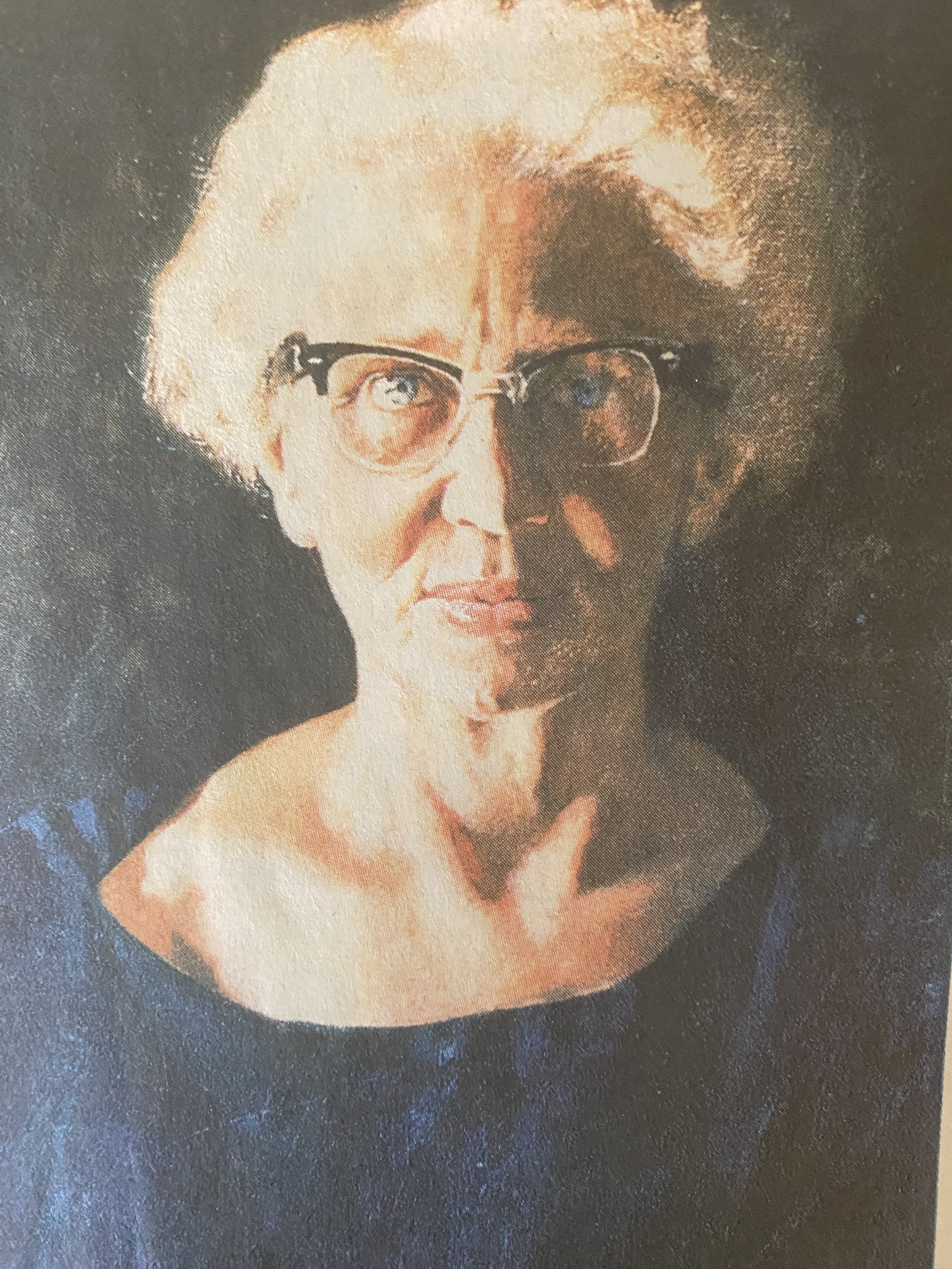Barbara Moreland, a cheery grandmother who runs her husband Gary’s plumbing business in rural West Virginia, still has the patient wrist band she wore in 1965 when surgeons at Johns Hopkins Hospital fixed her flawed heart.
Read more
Your Custom Text Here
Barbara Moreland, a cheery grandmother who runs her husband Gary’s plumbing business in rural West Virginia, still has the patient wrist band she wore in 1965 when surgeons at Johns Hopkins Hospital fixed her flawed heart.
Read more
It’s the 126th birthday of Helen Brooke Taussig (1898-1986), the humble children’s doctor who helped start heart surgery and used her fame to advocate for patients. So much of her work is ongoing: her 1938 plea that we systematically monitor children for high blood pressure is only catching on, and her campaign to protect us from unsafe drugs needs a reboot (17,000 deaths a year from legal opioids alone!) What of her work to cultivate and share beauty?
On a visit to her former gardens in Baltimore last week, I sniffed the delicate Bella Donna rose bushes she planted more than 70 years ago. Inspired by Helen, the current owners tend 50 rose bushes, 50 types of dahlias and about 80 varieties of daffodils – nearly twice Helen’s count. Helen famously timed her biannual doctor gatherings and lawn parties for maximum May bloom. Today she’d have to start three weeks early. Her work is not done, but her legacy continues. (More photos on my FB author page).


John Singer Sargent, the European-born American portrait artist, was a rising star in the Paris art world when he displayed an edgy, slightly decadent painting now known as Madame X at the Paris Salon in 1884. Parisians were horrified (if titillated) by the depiction of a society maven effortlessly flaunting her beauty; everyone recognized the subject, the married Amelie Gautreau, rumored to be an adulteress. As cultural historian Paul Fisher explains in The Grand Affair: John Singer Sargent in His World, (Farrar, Straus, and Giroux, 2022), the painting forced Parisians to confront the “decadence in their midst” —truths they quietly tolerated but preferred not to acknowledge. Unnerved by the outrage, Sargent exiled himself to London.
Portraits and the relationship between artist and subject have long been an obsession, so I listened eagerly to Fisher talk recently about how Sargent pursued bold women to model for him as he built his reputation in Belle Epoque Paris. They were divas, dancers, iconoclasts, women who defied social norms and cultural constraints. Sargent admired his subjects’ daring and gives them noble attributes in his paintings, which is why Fisher said he likes Sargent so much.
Sargent’s women, painted in 1880-1890s Paris, hung from banners and flashed across flat screens during Fisher’s talk last month at the Hay-Adams Hotel in Washington, DC. The artist signals their fearlessness, their defiance, their power with the removal of a white glove, a darkness about the face, or in the original version of the famous Madame X, the strap of her evening gown falling from her shoulder. “Sargent’s women are not objects,” Fisher said, “Sargent saw women as people, which is why (his paintings) “are so gorgeous.”
Fisher dug into Sargent's life to find out the backstory of Sargent’s women. Who was the man behind these innovative portraits? Why was he was drawn to painting transgressions, sometimes highlighting secrets that his subjects may not have wanted revealed? In his stunning account of the “buttoned-up,” never-married artist, Fisher explores what was it like for a man of Sargent’s talents and sensibilities to move between high society and bohemian cultures in Europe at the turn of the 20th century. He details Sargent’s deep relationship with his sisters and other women as well as his male friendships to try to understand his subject’s sexuality in his time and because they influence his painting and choice of subject, which include male nudes and homoerotic scenes discovered after Sargent’s death. Fisher says Sargent painted bold women to work out what he could not do in his own life, “They are courageous enough to do the things he could not do…” he said.
Sargent hid Madame X in his studio for 20 years, when he restored her dress strap and sold it to the Metropolitan Museum of Art in New York City. He considered it one of his best portraits. Today the elegant and confident Madame X feels modern, like another long-hidden portrait I have seen, this one of Helen Brooke Taussig, a children’s doctor and the subject of my upcoming biography, (A Heart Afire, Helen Brooke Taussig’s Battle Against Defective Hearts, Unsafe Drugs, and Injustice in Medicine, MIT Press, Dec. 2023). It is stored in the archives of the Johns Hopkins University School of Medicine.
In May 1964, eighty years after Madame X’s disastrous debut, Helen’s portrait was unveiled to similar horror. Her blouse hangs slightly off her shoulder, oddly reminiscent of Madame X’s fallen strap. But it is her intense gaze that moved admirers to tears. Within days, the portrait was whisked away by doctors who hired the artist, Jamie Wyeth, not to be seen again for nearly 50 years, during which they battled repeatedly over whether it should ever be displayed and what it represented.
Why such an outcry over an image that today seems so realistic, even noble? I delved into Helen’s life to find out. Who was the woman whose honor they guarded? How had she endeared herself to so many? What were the social and cultural obstacles women doctors encountered in her era? At the time of the portrait?

One thing I learned was how tenaciously Helen pursued treatments for her patients. She never gave up. She was also gracious. Unlike the tearful Madame Gautreau, she did not fear her reputation would be ruined by a portrait, though she did suggest Wyeth give it a clandestine title: “Portrait of a Physician.”
A la Sargent’s Madame X in 1884, did Wyeth’s “Portrait of a Physician” in 1964 reveal a secret about Helen too unseemly to acknowledge in public? Too ahead of its time?
What should powerful women look like?
And who decides?